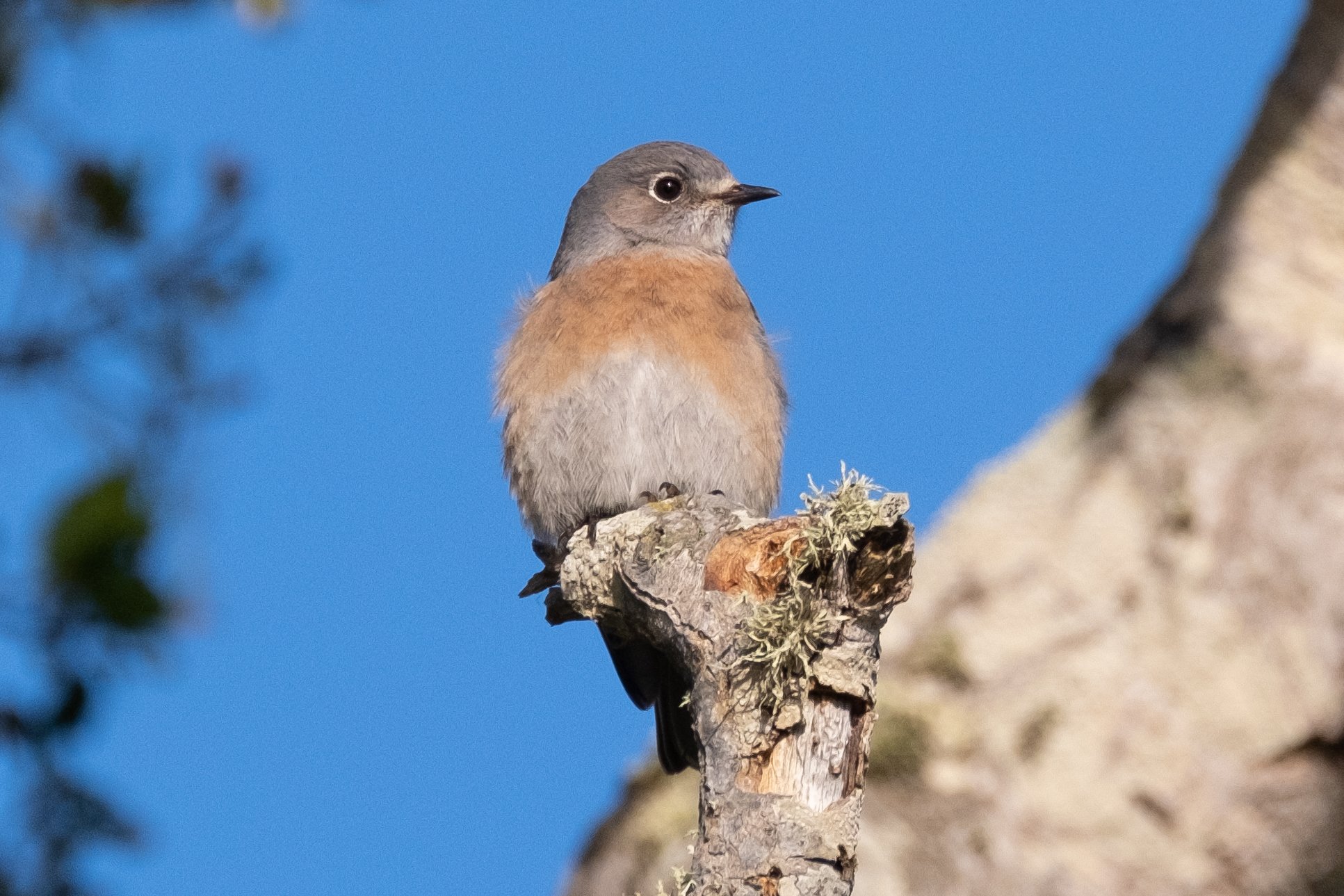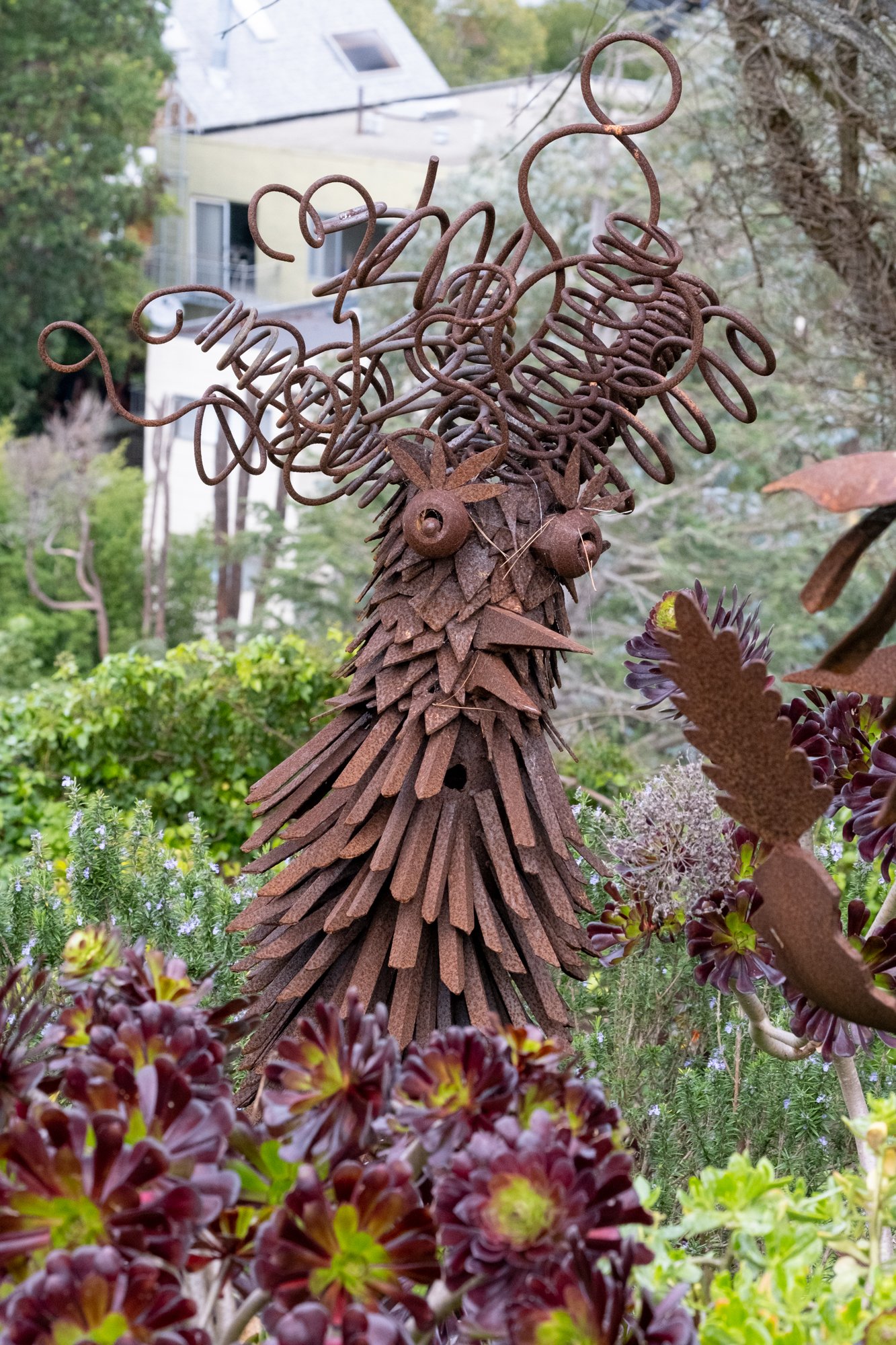Birding the Bay Area - Palo Alto Baylands + SF and Monterrey CBCs
Over Winter break, I was able to head down to Monterrey to participate there in the annual Christmas Bird Count (CBC). For two weeks around Christmas, counts are held around the world where people census all the birds in a circle with a diameter of 15 miles. The reason for the counts to be around Christmas is because it is the time of year when the birds are most sedentary and less prone to moving around, which lessens the chance of counting the same bird multiple times. The particular counts I do every year are the Monterrey and San Francisco ones. This year, the two counts were on consecutive days, so I was able to participate in both. For the San Francisco count, my dad and I birded Bernal Heights and most parks in a strip of land South of Cesar Chavez, but still in our area of the count. This was new for us because last year we had done a small section of Golden Gate Park. For Monterrey, we continued working our same section of the count: 17-Mile Drive. On the way down there, we stopped by Palo Alto Baylands where we tried for and saw the vagrant Curlew Sandpiper (Calidris ferruginea). Unfortunately, after we arrived in Monterrey we got the news that the count had been canceled due to the rain that was supposed to occur on count day. However, we still made the most of it and still birded some of our count areas. Luckily, the SF count was not canceled, and we were able to bird our area, despite the on and off sprinkling the clouds gave us.
The American Avocet (Recurvirostra americana) is the only species of Avocet in North America, but is widespread across most of Mexico and the Western/Central parts of the US. There is a rather interesting difference between male and female American Avocets in that the beaks on male avocets are longer and straighter while the bills on females are shorter and more recurved. This particular individual is a female avocet as denoted by this defining feature.
Curlew Sandpipers (Calidris ferruginea) typically winter in parts of Southeast Asia, Central/Southern Africa, and Australia. However, this one decided that the San Francisco Bay was the perfect spot to rest before inevitably heading back up to its Siberian breeding grounds. Vagrant sandpipers are a frequent occurrence in the US, with Asian/European sandpipers following defective migration paths to mudflats and estuaries on the West and East Coasts, with a fewer number venturing further inland. The Curlew Sandpiper is given its name from the curlew, a significantly larger sandpiper that has an extremely decurved bill. While Asia has the Far Eastern (Numenius madagascariensis), Eurasian (Numenius arquata), and many other species of curlew, the only living species of curlew that North America has are the Bristle-thighed (Numenius tahitiensis) and Long-billed Curlew (Numenius americanus), the latter of which was seen in small numbers on the same mudflat as the Curlew Sandpiper (it is important to note that while it does not have curlew in its name, the Whimbrel (Numenius phaeopus) is also a species of curlew).
Here we have a humorous picture of an extra-large four-legged American Coot (Fulica americana) seen in the process of foraging in briny water.
Further along on our trip down to Monterrey, we stopped by at Moss Landing. However, due to how late it was in the day, there weren’t many birds there. What we lacked in birds was made up by numerous sea lions though and amongst them was this Western Gull picking at the carcass of some poor long-deceased bird. It probably was some duck species or coot, but it was mostly just black and all the identifying features had already been pecked off the skull, so it was ultimately unidentifiable.
On the day the count was supposed to happen, it did rain, just not that much, and we had a relatively normal amount of birds for poor weather. Normally we do get a sizable flock of Heermann’s Gulls (Larus heermanni), but it felt like these tiny and out-of-place looking seabirds were everywhere. These gulls have an interesting breeding and migratory pattern. They breed very early compared to most other birds, starting in mid-February on islands off the coast of Southern and Baja California. Then, by the end of May, the first individuals start arriving at their wintering grounds which span from California up to small sections of British Colombia. The gulls leave their Californian wintering grounds in mid-October, a time when usually the last birds of most other species have just arrived at their own wintering grounds. While most Heermann’s Gulls spend our winter months down in Southern and Baja California, a couple hang out a bit farther North in Monterrey, and thus we get them on our Christmas count.
Here’s a different individual mixed in with a flock of other gulls.
One of the largest gulls we have in the Monterrey is the Western Gull (Larus occidentalis). It is a very common gull along the coast but is very strictly limited to the Western US coastline. They are also found in a small part of British Colombia and along parts of Baja California.
Here is a Black Phoebe (Sayornis nigricans) on a rock. Phoebes, like most other flycatchers, feed via sallying from a specific perch and then returning to make more passes at other bugs. They have many different perches that they like to use, but they seem to enjoy places best with a good view of the surrounding area, like, in this case, a rock that juts out high (for a phoebe) above a sandy beach.
Townsend’s Warblers (Setophaga townsendi) use the West Coast and parts of central Mexico as wintering grounds as they wait for summer to return and with it the breeding season. Once migration starts, they start moving back up North to locations in the Northeast, British Colombia, and Alaska. They migrate very far North, but they don’t really start that far South, so they aren’t that much of a long-distance migrant, at least where warblers are concerned.
Here’s another view of the same warbler.
While we did see Sea Otters (Enhydra lutris) the previous day at Moss Landing, we got better views of them off 17 Mile Drive. Sea Otters are very important in the maintaining of kelp forests. While there are multiple kelp forests in the world, sea otters only populate the one that stretches from the coast of Baja California to Alaska then back down on the Asian side to parts of Japan and Russia. Sea Otters eat various crustaceans, mollusks, and fish, but what is most important is that they consume sea urchins. Sea urchins are devastating to kelp forests, and while they are needed to keep the forests in check, the rampant sea otter hunting throughout the past couple centuries has dropped their population from the hundreds of thousands worldwide to around 3,000 for the Southern population. Due to recent conservation efforts, however, they have slightly rebounded, but the kelp forests have already taken irreparable damage from the excess of sea urchins.
Here is another picture of the same otter, still stuffing a sea urchin down its gullet.
The urchin is split in half, exposing the white inner shell and the yellow innards.
A landscape photo of Bird Rock and its surrounding islands. It is the first birding stop of the 17 Mile Drive CBC route and an important rock for many seabirds and shorebirds, including Pelagic (Urile pelagicus) and Brandt’s Cormorants (Urile penicillatus).
Here we have a Western Bluebird (Sialia mexicana) perched in a tree shortly after a rain. This individual is definitely not in breeding plumage, because when they have that molt, they looking a lot more blue and stunning, but still not as pretty as Mountain Bluebirds (Sialia currucoides).
Golden-crowned Sparrows (Zonotrichia atricapilla) are closely related to the more common and widespread White-crowned Sparrow (Zonotrichia leucophrys). During the winter, we have both the wintering Golden-crowns and the year-round White-crowns. Most White-crowned Sparrows at this time of year are young ones and have immature plumage in which most of their crown is rusty and gold-colored. Golden-crowns, at the same time of year, are usually in non-breeding colorations meaning their crown is less distinct and mainly consists of patchy black and gold. This means that Golden-crowned and White-crowned Sparrows are harder to tell apart at this time of year, although it is definitely doable and becomes much easier with practice.
Billy Goat Hill was a particularly good spot for sparrows (and not much else really), so we had lots of opportunities for sparrow photos like this one.
Here we have the White-crowned Sparrow (Zonotrichia leucophrys). As mentioned previously, this is a close relative of the Golden-crowned Sparrow, but this one is very easy to distinguish from the others as it is a full adult and was not born in the summer of this year, as can be seen by the complete white and black crown.
Nuttall’s Woodpeckers (Dryobates nuttallii) are a peculiar and tiny pecker that is one of the more unique ones in our area, at least when compared to the very similar Downy (Dryobates pubescens) and Hairy Woodpeckers (Dryobates villosus). They are also practically identical to the Ladder-backed Woodpecker (Dryobates scalaris), which thankfully doesn’t also live here and instead prefers to inhabit areas that are arid and contain cacti.
This toadstool is what I believe to be Fly Agaric (Amanita muscaria), which is a poisonous mushroom that, according to different sources, ranges from mildly poisonous to possibly deadly. However, everyone seems to agree that it has some interesting psychoactive/hallucinogenic properties and that using the correct preparation techniques, it becomes quite edible. I find it more interesting just to look and photograph this rather beautiful mushroom than eat it though.
A false chicken (Gallus falsus).
Anna’s Hummingbirds (Calypte anna) were quite abundant on the SF CBC and were frequently prone to angry little quips and chirps. Despite that, this one, in particular, seemed more content to rest and sleep on its branch, despite its quite fierce gaze. Breeding season for these hummingbirds starts even earlier than the Heermann’s Gulls, and one can hear the hummers start their courting practically at the last vestiges of Fall.
An glimpse into a moment in a life of an angry but tired hummer.






















